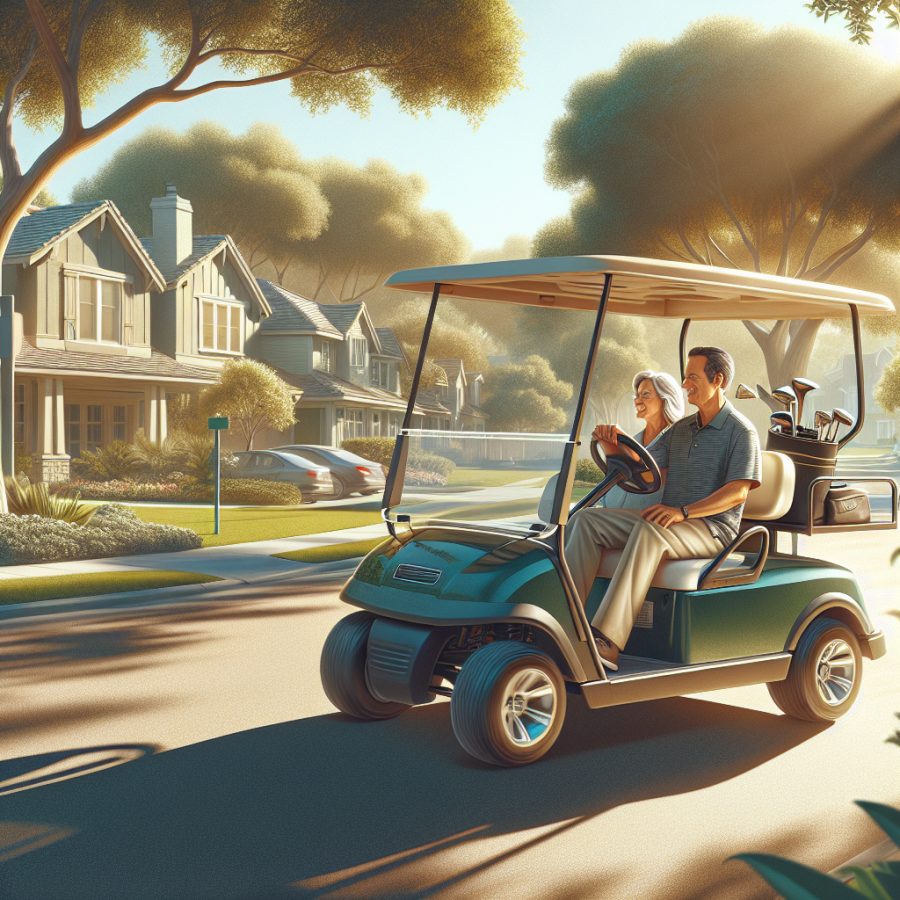Essential Safety Guidelines for Operating Golf Carts on the Road
While golf carts were initially designed for the golf course, today, they are being used beyond this environment. Some people are finding them an efficient and more eco-friendly mode of transportation for shorter distances, such as around gated communities, large workplaces, or during events. Whatever the reason for taking them on the road, follows the rules.
In many states within the US, golf carts are legally allowed to be driven on the road. However, they must adhere to specific safety guidelines to ensure the safety of the driver, passengers, and other road users. Below are some of the essential safety guidelines for operating golf carts on the road.
Firstly, golf carts must abide by the traffic rules. They are still considered motor vehicles, so golf cart operators should obey all traffic laws, including yielding right-of way, observing stop signs, staying within speed limits, and using proper signal maneuvers.
Next, equipment upgrades are crucial. Most golf carts come with a maximum speed of 15 MPH and are not typically equipped with seat belts or turning signals. Before taking a golf cart on public roads, upgrades might be necessary. Installing seat belts, rearview mirrors, a horn, headlights, and brake lights would go beyond improving safety. These enhancements will also put one in compliance with most municipal laws governing golf cart use on public streets.
Furthermore, the use of safety gear should never be compromised. Like any other vehicles, it's necessary to use safety equipment when operating a golf cart. Things like helmets and seat belts - if the golf cart is fitted with them - can be key to minimizing injury in case of an accident.
Moreover, it's vital to consider weight limitations. Overloading a golf cart not only compromises its stability but can also lead to wear and tear. A typical golf cart is designed to carry two people and their golf clubs. It's crucial to confirm the maximum payload of your golf cart and not exceed it.
In addition, golf carts should only be used on designated roads. These are specified roads that allow for the operation of golf carts. They comprise roads within retirement communities, university campuses and other private areas that give permission for golf carts to use their streets.
Importantly, golf cart operators should never drive under the influence. Though golf carts may seem less harmful compared to larger vehicles, the dangers of driving them while impaired by alcohol or other substances are still present.
Lastly, drivers should ensure to use golf carts only during ideal weather conditions.
Read also:
Exploring the Benefits of Recreational Activities for Health and Well-being
Understanding the Legal Implications of Driving Golf Carts on Public Roads
Golf carts, while initially designed for the golf course, have become increasingly popular as a mode of transportation off the greens. These small and seemingly innocuous vehicles are used widely within gated communities, on university campuses, and even in small towns. However, navigating public roads with a golf cart is not as straightforward as it might seem and comes with numerous legal implications.
From a federal perspective, the National Highway Traffic Safety Administration (NHTSA) has set specific safety standards for motor vehicles, but golf carts do not usually meet these criteria. Despite this, each state has the authority to determine its traffic laws, which includes regulations governing the use of golf carts.
In general, these laws center around the golf cart itself, the driver, and where it can be used. For instance, the vehicle must often have certain accessories to be considered 'street-legal,' especially if it will be driving during hours of darkness. Some common requirements might include having headlights, taillights, a horn, rear-view mirrors, seat belts, and a valid vehicle identification number (VIN).
The driver also comes under scrutiny in these laws. In many areas, operators of golf carts must be over a specific age – often 16 – and hold a valid driver's license. In some cases, golf carts can only be driven on public roads during certain hours, such as sunrise to sunset. Moreover, some jurisdictions even mandate that golf cart drivers carry insurance liability, just like regular motor vehicle drivers.
Even with these modifications and requirements, most jurisdictions limit the public roads where street-legal golf carts can travel. Typically, these are public roads with a speed limit of 35 mph or less. Golf carts are generally prohibited from traveling on sidewalks, bike paths, interstate highways, and major throughways, or anywhere they would impede traffic flow.
Of course, the specific laws vary substantially depending on the jurisdiction. Some states are golf cart-friendly, such as Florida and Arizona, which permit golf carts to travel on the road more ubiquitously, but only provided they meet the necessary safety requirements and adhere to designated zones. On the flip side, in other states, golf carts are strictly limited to private property and golf courses.
In addition to state regulations, cities, and municipalities may have their own golf cart ordinances. Some local governments might be lenient, allowing golf carts to traverse around town freely so long as they follow the rules of the road like any other motor vehicle.




